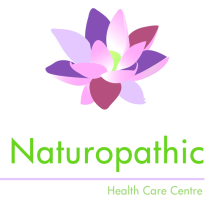|
Sister Alida Idema
It is found in the root of the nose. Think aeroplane cabin…. Back in the 1930’s the first aircraft was equipped with a pressurised cabin, enabling passengers and crew to breath more comfortably in the thinner air when reaching high altitudes. Since then, cabin pressurisation has become a technology that most passengers take for granted. Cabins are pressurised by pumping fresh air into them after which the air is cooled and humidified and then circulated throughout the cabin. Apart from creating a more comfortable environment, it is an important safety feature. Your cells need oxygen to produce energy and help your organs and tissues to do their jobs. Iron, that is contained in the haemoglobin of the blood, carries oxygen to every cell in the body. So, once the cabin achieves an ideal pressure level that is safe for the passengers, the aircraft maintains it at that level. However, sometimes things go wrong for whatever reason, As the aircraft cabin loses its pressure, oxygen masks will automatically drop down in front of passengers. Normally our bodies can maintain optimal oxygen levels enabling all our systems to work properly, but sometimes we need to supplement with the oxygen carrier, Ferrum phos. Ferrum phos is known as the first aid remedy and is the most important tissue salt to take at the first sign of infection and inflammation. It brings oxygen to the cells that assists healing. It is able to strengthen the blood vessels and their ability to distribute oxygen rich blood to the cells and carry the carbon dioxide back to the lungs. The presence of Ferrum phos activates all sort of processes within the body especially the process of releasing energy from the food we eat. Chronic conditions that ask for supplementing with Ferrum phos are fatigue and exhaustion, poor concentration, low immune resistance, migraines and headaches, rheumatoid pains. In acute cases Ferrum phos is given during the first stages of a common cold, earache, sore throat, feverish conditions (with pulsating pain, flushed cheeks and ears), joint pains, red and burning eyes, menstrual pain and gastrointestinal conditions. Foods that are rich in ferrum phos are garlic, celery, parsley, spinach, radishes and lettuce. Our hard-working bodies and busy minds can benefit by eating lots of these, fresh or cooked. And finally, take Ferrum phos - tissue salt no. 4 every day.
0 Comments
Leave a Reply. |
AuthorsDr. Marike de Klerk Categories
All
|
All rights reserved Naturopathic Health Care Centre
ADDRESS: No 13 Hazelwood Road, Hazelwood, Pretoria
TELEPHONE: 012 460 9216
PAIA Manua
Website design and digital marketing by Plan Me Pretty (PTY) Ltd
TELEPHONE: 012 460 9216
PAIA Manua
Website design and digital marketing by Plan Me Pretty (PTY) Ltd

 RSS Feed
RSS Feed